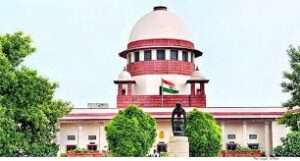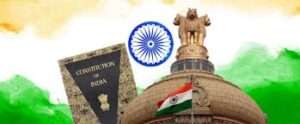
This article has been written by Jatin Rana, (pursuing a B.A.LL.B. (Hons.) (IVth Year) from Law College Dehradun faculty of Uttaranchal University)

Introduction
The same sex marriage or homosexual marriage has become a new gurgling issue in India. People whose sexual orientation is towards the same gender are raising their voice in order to extend their rights for marriage. In the case of Navtej Singh Johar v. Union of India[1], the hon’ble Supreme held that Section 377 of the Indian Penal Code, 1860 (hereinafter known as IPC) is not applicable in the case of consensual relationship between adults which is in private, provided that the consent should not be obtained by any illegal means. Also , in the case of, K.S. Puttaswamy v. Union of India[2], the hon’ble Supreme Court observed that the right to sexual orientation is an intrinsic part of the right to privacy. When these both judgements are considered togetherly and parallelly, it is well established that the homosexual couples has right to make consensual relationship under Article 21 of the Indian Constitution, 1950 (hereinafter known as COI) and in the present scenario, the sexual minority is asking for the extension of the prior recognised rights in the form of same sex marriage.
Howdy, you all! Welcome to your page of knowledge. You will find different legal blogs, the latest news, current affairs, and many more on this channel. This is the initiative to develop the knowledge of the law in the world, especially for you.
History
If we dwell into the history, the same sex relationship is not something new or the budding concept on the globe. There are ancient books, sculptures and practices in India which shows that the homosexuality is practice in India from the ancient times.
One of the famous places in India, Khajuraho Temple in Madhya Pradesh has many sculptures which shows the practices of homosexuality like gay and lesbians. It shows same sex couples doing sexual acts. It is also important to notice that these temples were built between 950 and 1050.[3]
Also, the Kama Sutra book written by Vatsyayana is also called as the oldest book of Erotic love, covers the concept of homosexuality in India. It is believed that this textbook was written between 400 BCE and 200 CE. The textbook has referred gays as ‘klibas’ and lesbians as ‘swarinis’. The concept of homosexuality is discussed lightly in Part II Chapter 9 of the Kama Sutra book.[4] Thus, it is evident that the practice of homosexuality is not new on the globe and is practiced since ancient times.
View of Indian Judiciary
In the year 2018, the hon’ble Supreme Court in the case of, Navtej Singh Johar v. Union of India,[5] decided to observe the applicability of the Section 377 of IPC and observed that the said section should be studied in two aspects i.e., consensual, and non-consensual relationships. On the basis of the same, it was held that the said section is not applicable to the consensual relationship of the adult in private, provided that the consent is not obtained by any illegal means. From the decision of the case, the non-heterosexual couples (adults) got the collateral recognition of their relationship.
Also, in the case of K.S. Puttaswamy v. Union of India,[6] the hon’ble Supreme Court held that the right to sexual orientation is also an intrinsic part of the right to privacy under Article 21 of the COI.
Now, the non-heterosexual couples are raising their voices to extent their initial rights to the family rights. Recently, the hon’ble Supreme Court in the case of ,Supriyo v. Union of India,[7] held that there is no fundamental right to marry in India. The transgenders people which recognise themselves as male and female can marry according to the provisions of the present marriage laws, provided that the couple is heterosexual. But there is no law regarding the marriage of non-heterosexual couple.
CJI[8] was of the view that the absence of marriage law for non-heterosexual couples will scope of the Article 15 of COI. The letter ‘sex’ in the said article covers the ‘sexual orientation’ of people and discrimination of the basis of it will violate and limit the scope of Article 15.
In this case, the hon’ble Supreme Court, with the majority held that there is no fundamental right to marriage in India and it is not the task to be initiated by the Judiciary to frame gender neutral laws for the non-heterosexual couples and said that it wholly lies upon the legislature to frame the gender-neutral laws for the non-heterosexual couples.
Conclusion and Suggestion
As said above, the concept of homosexual couples is not new to our country and one should understand that it is someone’s right. Declining the right to union of homosexual couples is totally against the rights mentioned in part III of the COI. The law should be framed by the Indian legislature regarding the family rights of the homosexual couples.
The concept of homosexuality and heterosexuality is totally based upon the sexual orientation of the people. Thus in last, my idea and suggestion is that the marriage contract should be made between the parties in the homosexual couples and it should clearly mention that which party is having more masculinity and which is having more femininity and on the basis of the same, the parties should be recognised as ‘majorly masculine’ and ‘majorly feminine’. These ingredients in the contract at the prior stage will help to resolve the issues which may arise later like of maintenance, divorce, etc.
- Business Law
- Case Law
- Civil Law
- Constitutional Law
- Consumer Protection
- Criminal Law
- Current Affairs
- Current legal issues
- Environmental Law
- Intellectual Property
- Legal Facts
- Legal News
- Uncategorized
- Top 5 Landmark Judgments on the Constitution of India in 2023-2024
- PRIYANKA SRIVASTAVA AND ANR. V. STATE OF UTTAR PRADESH & ORS. (2015) 6 SCC 287
- Section 113 of Bharatiya Nyaya Sanhita (BNS) Act: Unpacking Its Ramifications on Counterterrorism, Civil Liberties, and Legal Integrity
- WHETHER THE PRESIDENT AND GOVERNOR HOLD ABSOLUTE EXEMPTION FROM CRIMINAL LIABILITY? ARTICLE 361 OF THE INDIAN CONSTITUTION
- Whether DEFAMATION AS AN OFFENSE should exist or not
LegalOnus
Aequitas Sequitur Legem
[1] Navtej Singh Johar v. Union of India, (2018) 10 SCC 1.
[2] K.S. Puttaswamy (Privacy-9J.) v. Union of India, (2017) 10 SCC 1.
[3] UNESCO World Heritage Centre.
[4] Kamasutra, Vatsyayana, Part II, Chapter 9, Auparishtaka,
[5] Supra No. 1.
[6] Supra No. 2.
[7] Supriyo v. Union of India, Writ Petition (Civil) No. 1011 of 2022.
[8] Chief Justice Of India, Dhananjaya Yeshwant Chandrachud.





